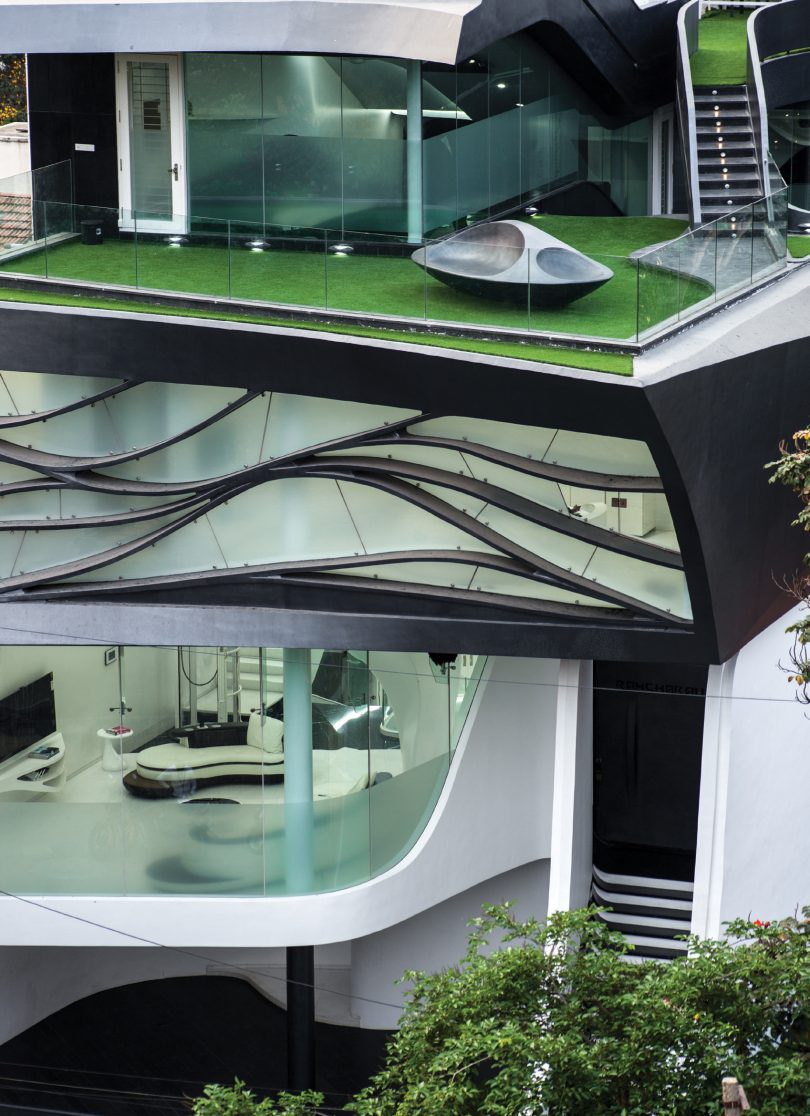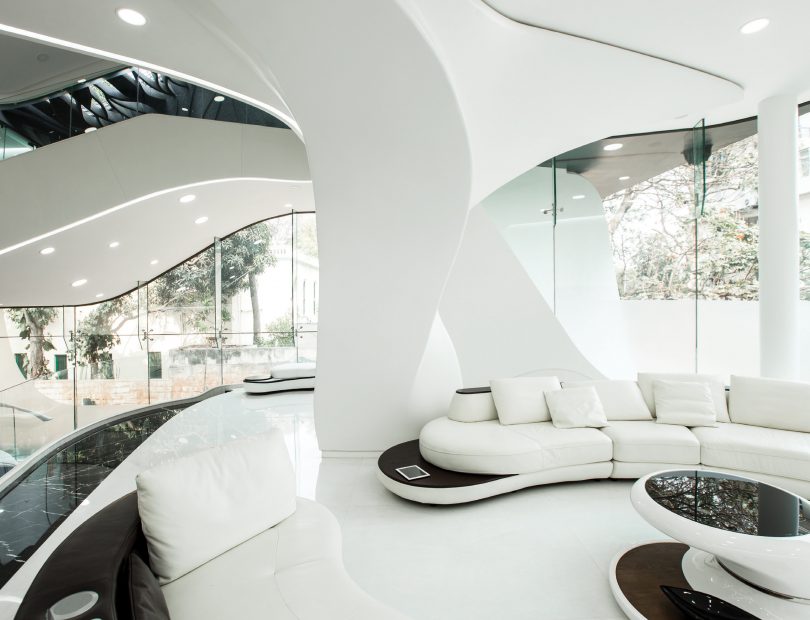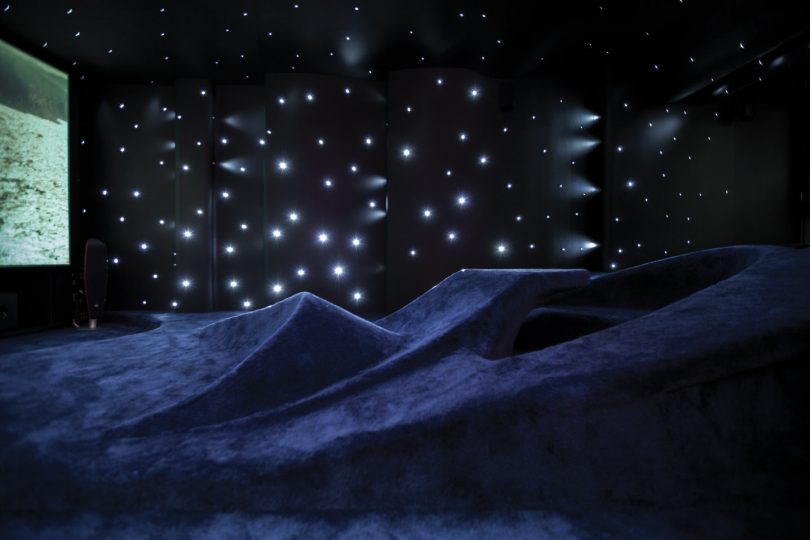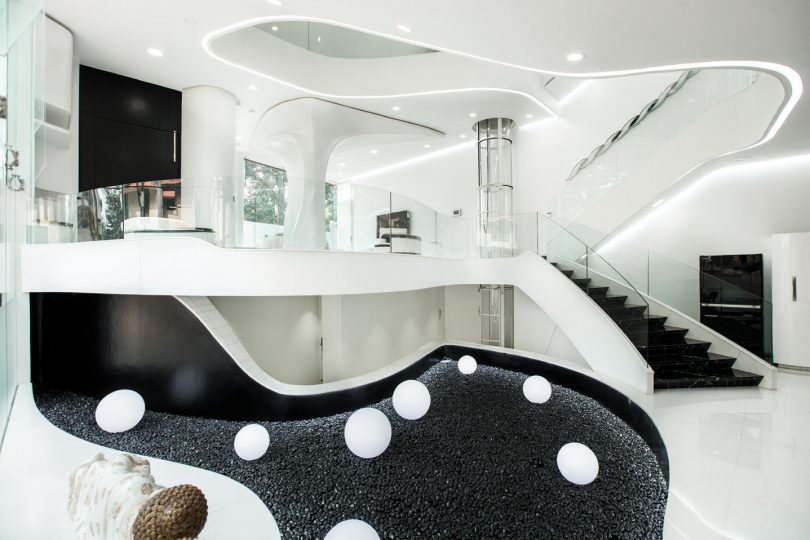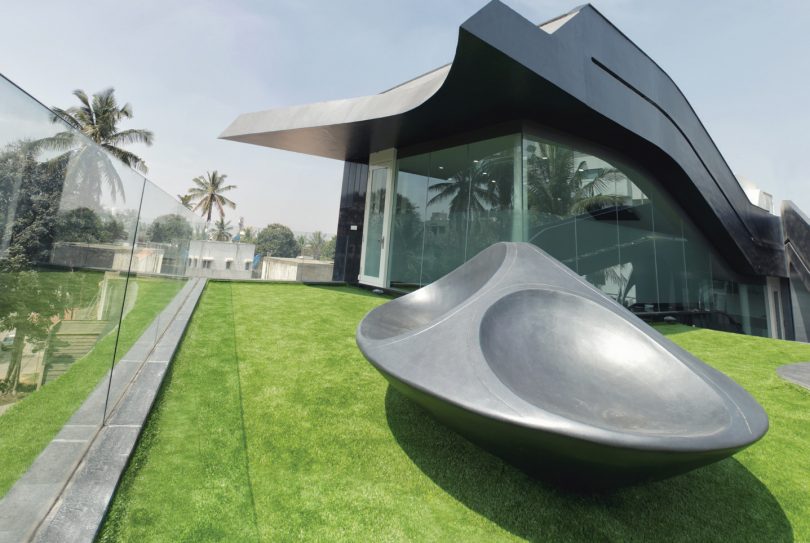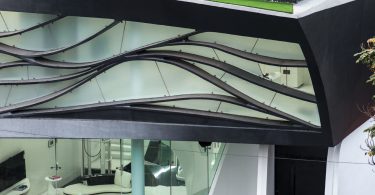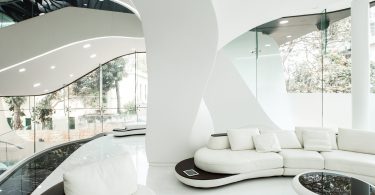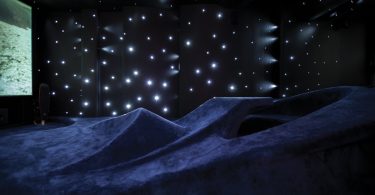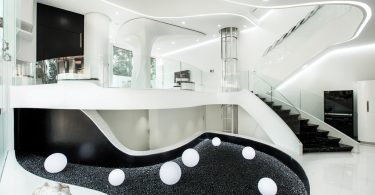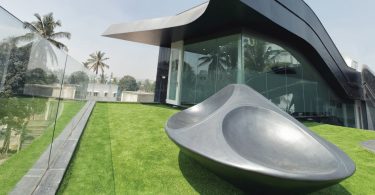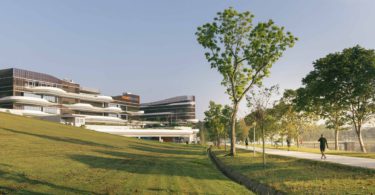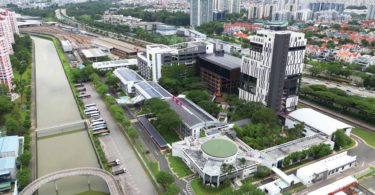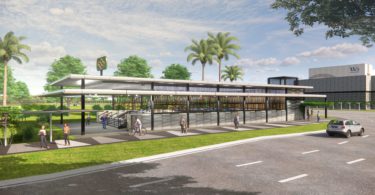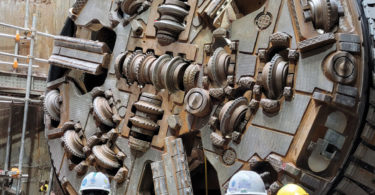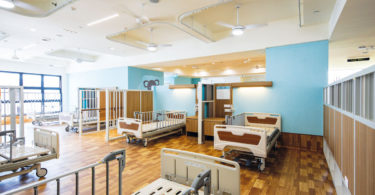With a distinct client’s brief for a residence, the design approach commenced with the challenge to conceptualise and execute a distinctive abode on a limited budget over seven years. The south-facing plot measures 40 feet by 70 feet, flanking a conservancy on the east side in a typical dense urban setting. The house was conceived as an open fluid event space, which would imbibe a sensual, viscous quality in its form. The section of the house was therefore conceptualised to enable this choreography of spaces, and it is the section that generated the plan and the form of the house.
The movement in a conventional residential plan happens across the site and through the various programmes in a circuitous manner. The functions in this residence are arranged in a centripetal manner, opening up the spaces into a triple-height atrium, which lets the user appreciate the expanse of the site. Conceived as a continuous loop that sectionally rises up from the ground, the plan is carved out of the whole. The looping concrete slab not only demarcates the plan along a split section, but also manifests itself as a staircase to connect the various levels into one continuous folding surface. The folding slab animates the space around it and renders it fluid, almost like thick viscous liquid. One experiences this gelatinous space while walking along the loop through the house. The constantly changing section of the house further animates the house formally and spatially.
Programmatically, the dwelling has the living room at an elevated level overlooking an open kitchen and dining area across a Zen garden. The four bedrooms and the home theatre are organised along the folding loop at various levels in section. The home theatre in the basement is at one end of the loop and the open-air amphitheatre on the terrace forms the other end.
MATERIALS
The interiors of the residence are dispersed with fluidic forms that accentuate the sinuous language of the house. Further accentuating the fluidity of the space and form, elements such as cabinets, beds and ledges drape the existing fluid shell in a way to erase the difference between architecture and interior design.
All the materials were locally procured. Malleable materials such as ferro-concrete—which is more commonly seen in exterior elements— are used for furniture, thus bringing about a connection between the architecture and interior design. Ply and solid surface acrylic are used to create the fluid objects that melt into the existing structure to create a cohesive sensuous whole.
OVERCOMING CONSTRAINTS
Translation of the sculptural idea into a workable design and construction was a serious challenge. Digital media and physical models were an integral part of the design process, with these sculptures used as a reference prototype for the execution on-site.
Since the shorter side of the house faces the south, the traditional brise-soleil has been reconceived in a more fluid avatar to constitute the elevation and thereby cut the heat. As the longer side faces the east with a conservancy, the edge is detailed as being porous, so that the distinction between the inside and outside is blurred. This also enables ample east light into the house. The bottom transparent base also tantalisingly holds up the heavy fluid mass on top that appears to be levitating.
The client worked in close collaboration with the architects for seven years, redefining what a house should be at every stage and questioning the norms of traditional plan making for a residence. There was a hunger to chase and realise bespoke design elements that cohesively bind the sinuous internal volume. The client not only endorsed the designers to build him his ‘dream house’, but also endorsed the studio to recognise and accomplish its own design ethos.
PROJECT
Project Name: Elastica
Location: Bangalore, India
Completion Date: July 2016
Site Area: 2,800 square feet
Gross Floor Area: 7,450 square feet
Building Height: G+2, 14.3 metres
Number of Rooms: 8
Client: Raju
Architecture Firm: Cadence Architects
Principal Architects: Smaran Mallesh; Vikram Rajshekar; Narendra Pirgal
Interior Design Firm: Cadence Architects
Principal Designers: Smaran Mallesh; Vikram Rajshekar; Narendra Pirgal
Structural Consultant: B.M. Manjunath
Images: Sergio Ghetti.com; Cadence Architects

 Malaysia
Malaysia Hong Kong
Hong Kong Indonesia
Indonesia Tiếng Việt
Tiếng Việt ประเทศไทย
ประเทศไทย


